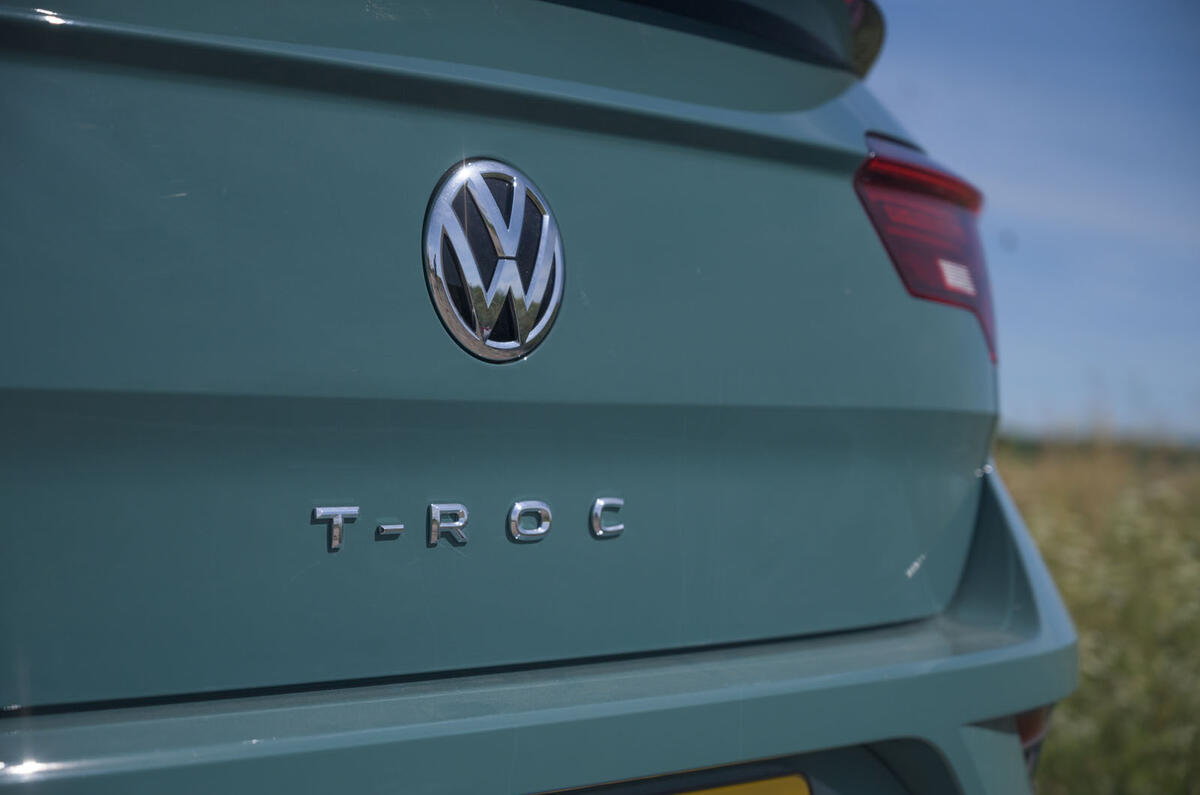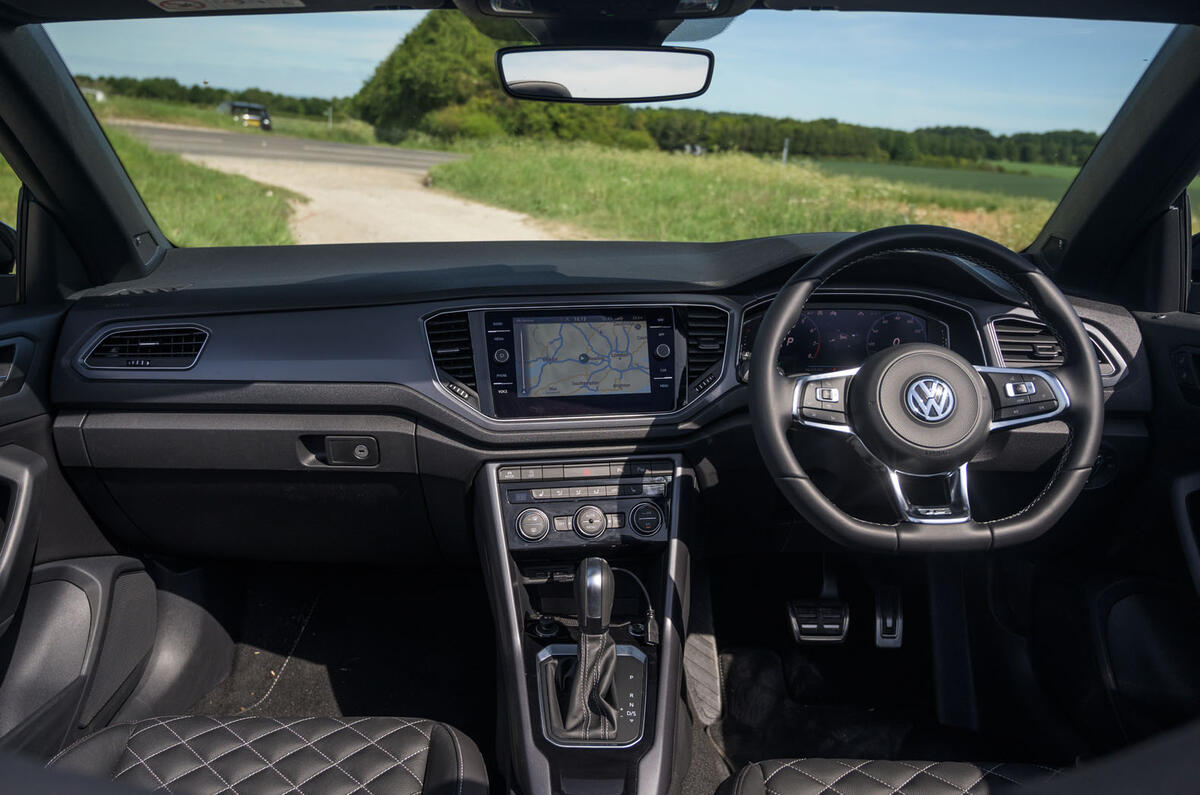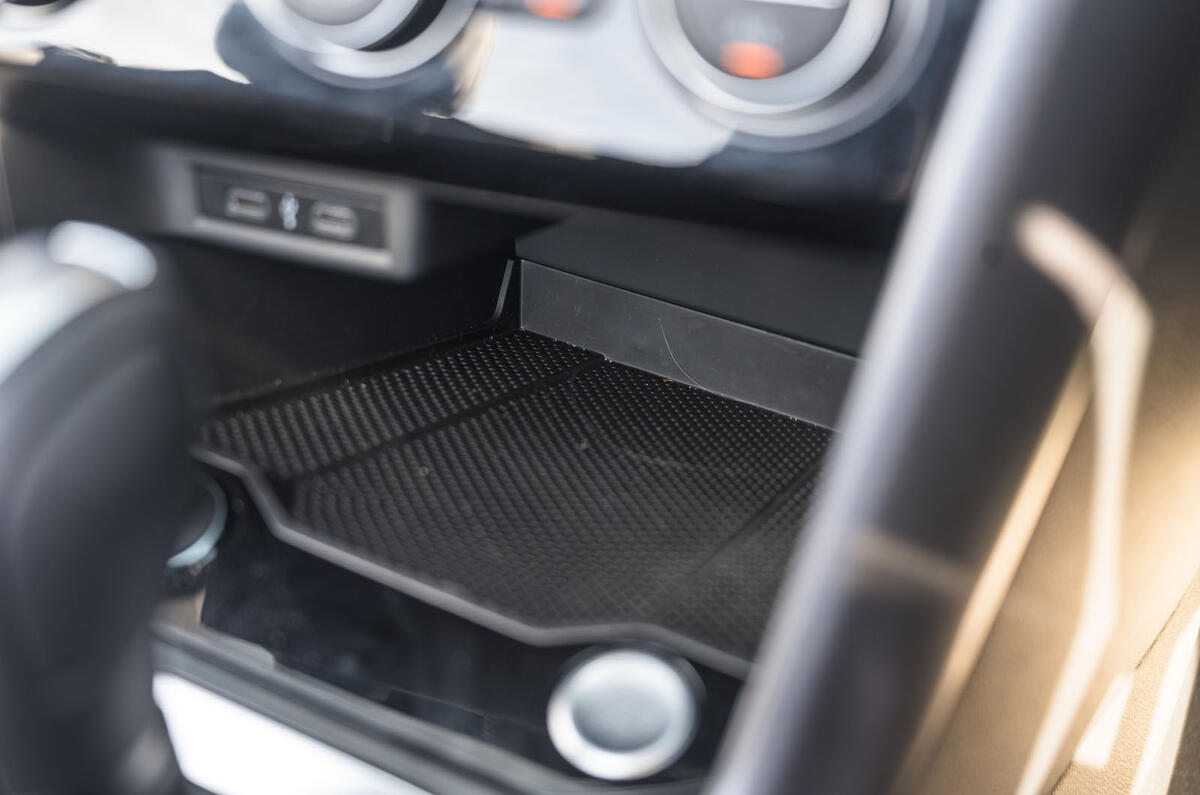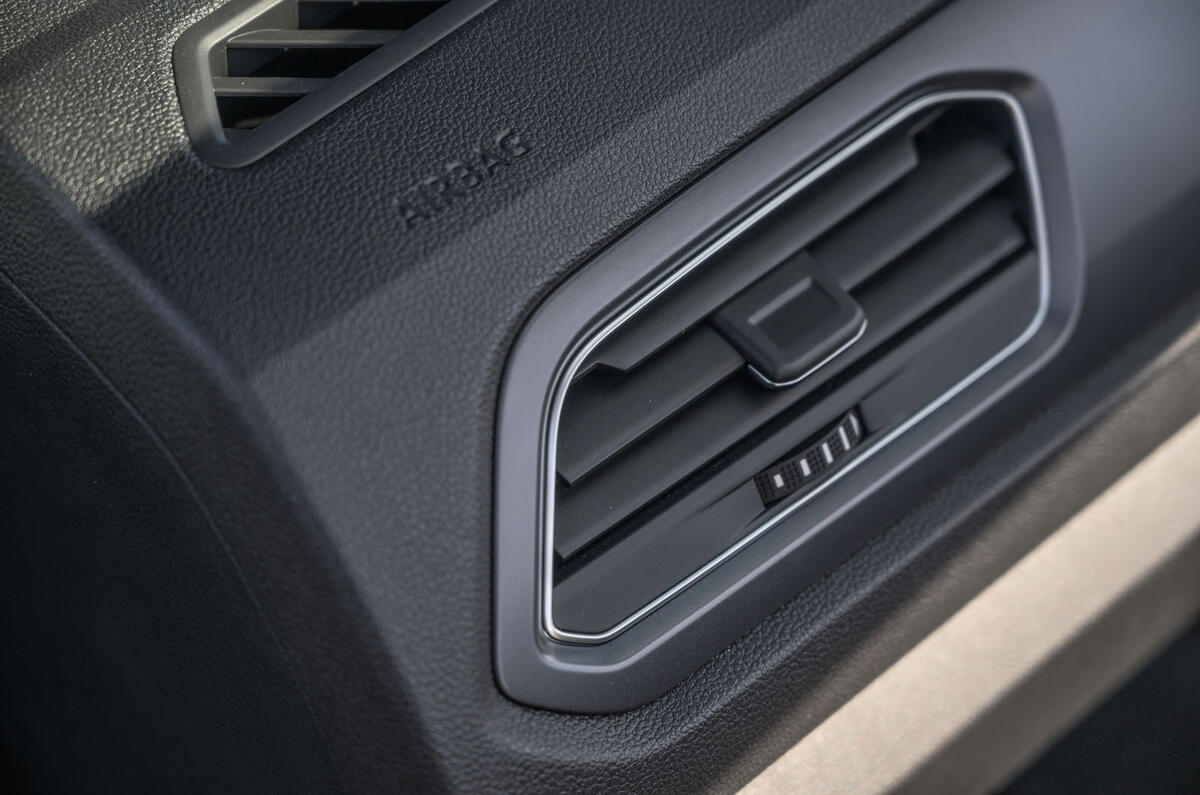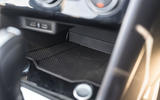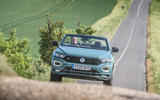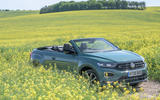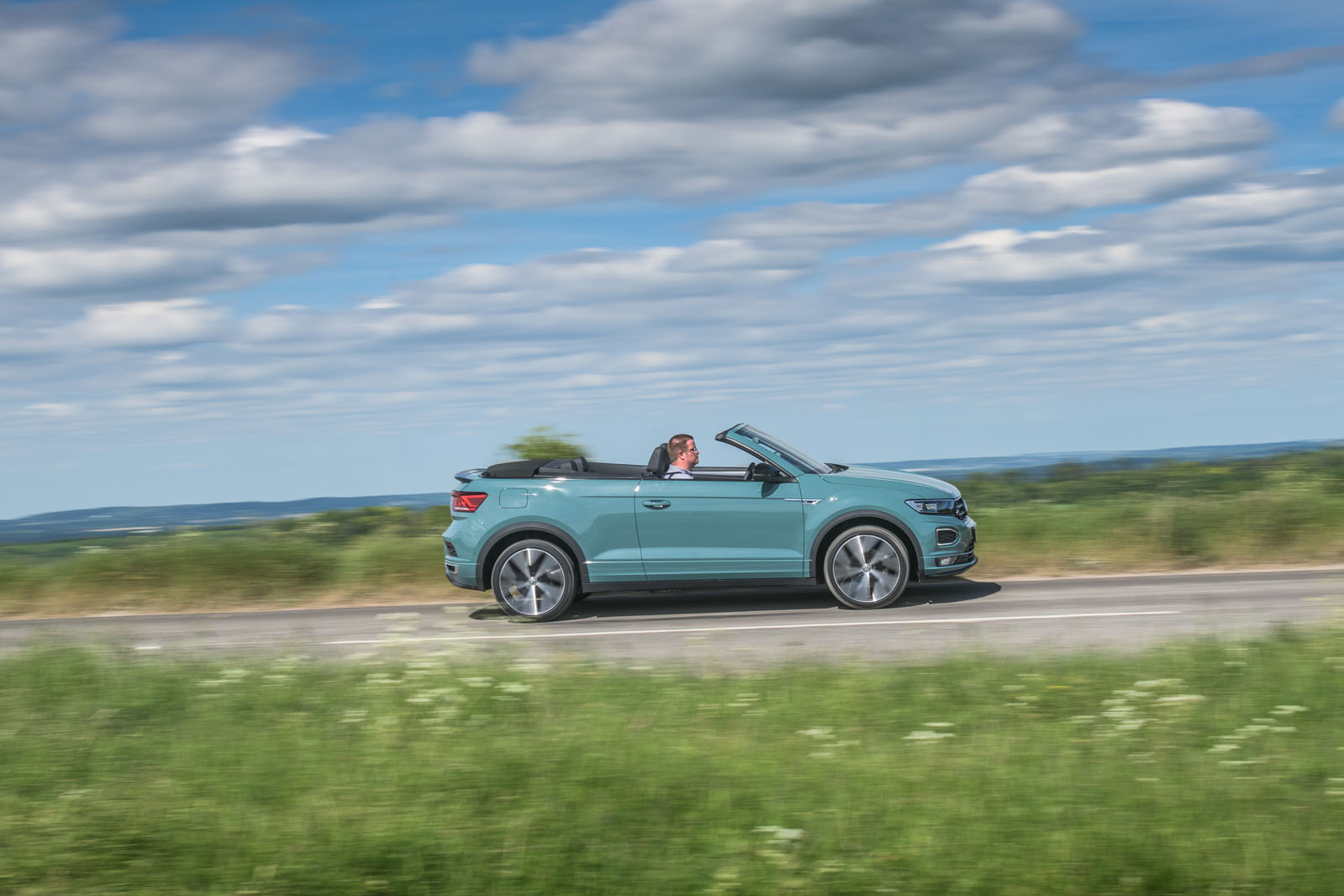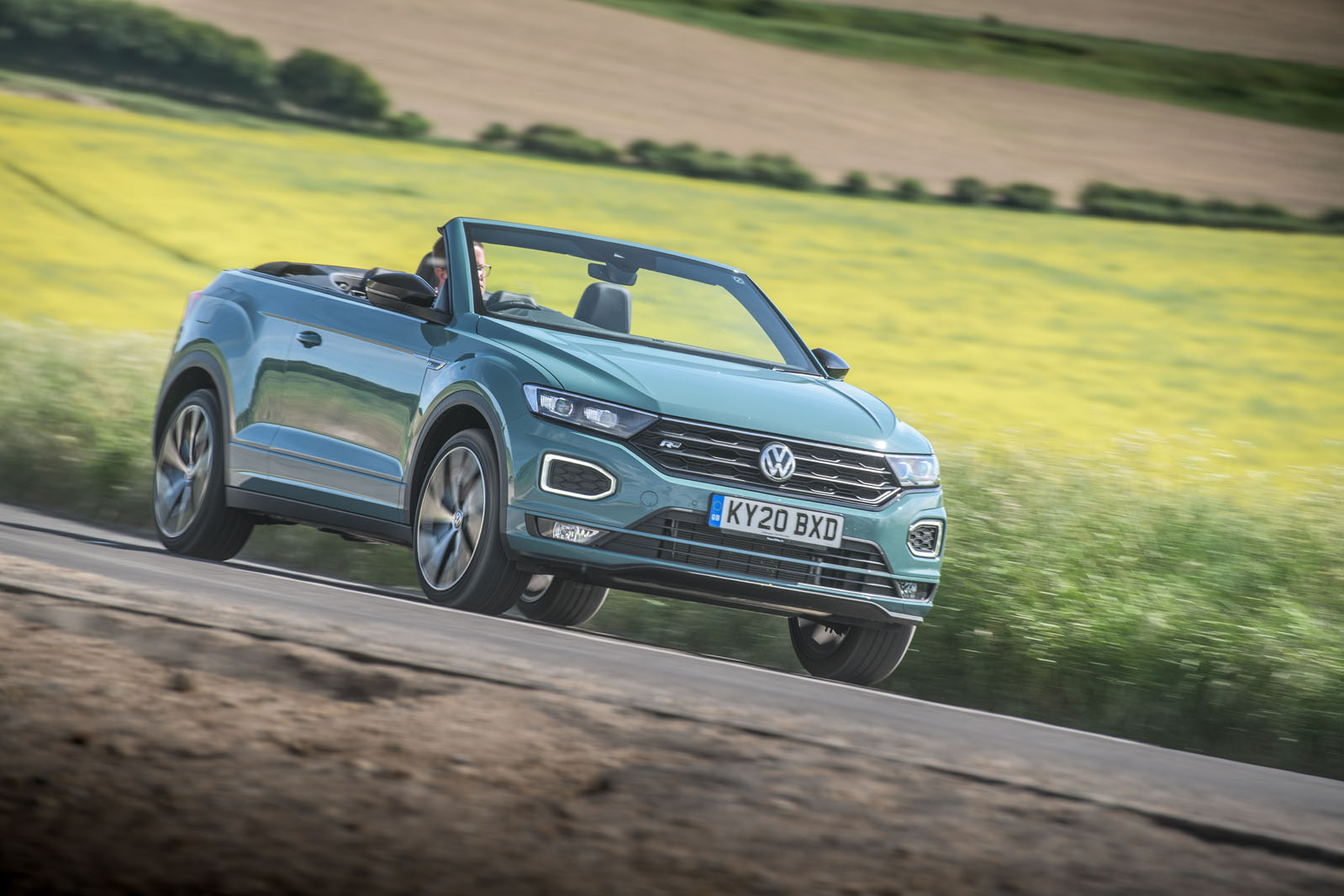The T-Roc’s status as a genuinely usable four-seat cabrio might give it a certain rational appeal at lower price points where equally practical open-top options have become rare. At higher price points such as that of our test car, four-seat alternatives for similar money aren’t so hard to find.
After pulling open an unusually large and heavy door, you’ll find a comfortable driving position that, while anything but low or sporty, still manages not to feel perched as a result of the car’s high waistline. Even taller, bigger drivers will find plenty of head and leg room up front.
If carrying adults in the rear, you are likely to need to sacrifice some front-row leg room to accommodate everyone comfortably. Anybody travelling in the back will need to be below average height, though, since the roof impinges on head room a bit when it’s in place. The second row is a two-seater. It’s a little narrow, with two seatbelts only, but it does have Isofix points and accommodates child seats pretty easily.
Still, the implicit suggestion that you’re getting a crossover-hatchback-sized cabin in this crossover convertible is quickly debunked. And yet, compared with the cars that must be considered the T-Roc’s closest rivals – the A3 Cabriolet and BMW 2 Series Convertible – the VW offers quietly commendable usability.
Access to the boot is restricted a little by the roof mechanism, but the capacity is the same whether the hood is up or down – and 284 litres is more carrying space than the BMW affords, albeit not quite as much as the Audi.
For cabin ambience and perceived quality, the T-Roc Cabriolet hits a reasonable standard, but not a great one considering the price positioning of top-of-the-range versions. The dashboard is attractive and well finished, and although our test car’s was a little monochromatic, bolder colour combinations are available. The usability and graphical presentation of the infotainment and digital instrumentation systems are impressive. The car lacks a little bit of the tactile quality feel you expect of a VW at this sort of price, though – the soft-touch mouldings and finer materials in particular.
VW T-Roc Cabriolet infotainment and sat-nav
Both T-Roc trim levels come with a good 8.0in Discover Navigation colour touchscreen infotainment system. Upgrading to R-Line trim gets you the 10.3in Active Info Display digital instruments as standard (they’re £435 otherwise) but you’re still expected to pay extra for VW’s Beats premium audio system (eight-channel, 400W) and for voice activation (£210) irrespective of trim level. For the price of an R-Line, VW should have thrown those in as well.
The touchscreen interface is laid out clearly and responsive to inputs. The navigation is easy to programme, too. It displays mapping and instructions neatly and attractively and you can relay them into the digital instrument cluster.
Our test car had the optional premium audio system, which sounded fairly good but it didn’t have the knockout power some urban cruise merchants might desire. Music can be streamed and played via your smartphone’s data connection. Apple CarPlay and Android Auto mirroring is supported as well.













